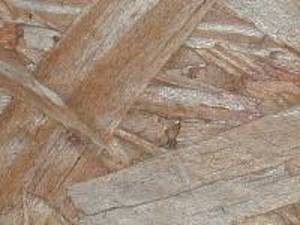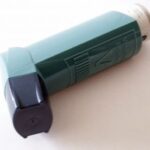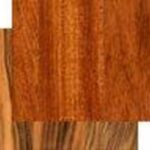Persons with asthma, allergies, chronic sinusitis or similar upper respiratory problems are well attuned to the specific environmental triggers that cause their conditions to flare up. In order to make life as symptom-free as possible, they go to great lengths to purchase the proper allergen reducing products, adhere to medication schedules, and avoid situations that may compromise their lung function. Unfortunately, even the most diligent may overlook the danger that resides in nearly every home.
Particle board, wood veneer, hardwood plywood and similar products are home to an oft-ignored source of indoor air pollution, (i.e. formaldehyde) and are therefore a potential health risk. It is important to note that these wood products are not the problem; rather, it is the combination of certain adhesives used in the manufacturing of the particle board that causes the true pollutant, formaldehyde, to surface.
The Asthma and Allergy Foundation of America (AAFA) reports that manufactured wood products such as plywood and composite board pose the same risk as particle board. Formaldehyde is commonly used in these manufactured wood products because of its preservative and adhesive properties.
Because formaldehyde is a type of volatile organic compound (VOC), it is readily emitted into the air. However, not everyone is affected by it in the same way. Only sensitive populations, such as those with compromised respiratory function due to asthma or allergies, are likely to experience the direst reactions to formaldehyde exposure. For example, exposure to high concentrations is likely to trigger asthma attacks in some people, whereas the same degree of exposure will have no adverse affect on an otherwise healthy individual.
Formaldehyde in its gaseous form is colorless and odorless. It is a lachrymator, meaning it causes irritates the eyes, nose and throat, causing itchiness and sometimes moist discharge. Additional symptoms of exposure may include dizziness, nausea, headache, and perhaps of most concern to the asthmatic, upper respiratory irritation.
In the scientific laboratory setting, prolonged or frequent exposure of animals to formaldehyde in any form has been linked to cancer, but this does not necessarily ring true in humans. Regardless, the Environmental Protection Agency (EPA) and the National Institute for Occupational Safety and Health (NIOSH) considers formaldehyde a “probable human carcinogen.
Notable items in the home containing particle board include bookshelves or entertainment units requiring assembly. Medium density fiberboard is another significant source of formaldehyde in the home, as are hardwood plywood, paneling and some floor finishes. In some cases, removing the source of formaldehyde may not completely eliminate the chance of further exposure. Depending on the temperature and humidity, emissions and concentration levels may fluctuate. For the most part, the most destructive of these products have been successfully removed from the market and are no longer available.
Completely eliminating all manufactured wood products from the home is not an economically feasible or practical approach, but there are some ways to reduce the likelihood of over-exposure and prevent adverse health effects. Replacing the existing particle board with softwood plywood or wafer board can be done with little expense and effort. Areas under cabinets or drawers where manufactured wood is exposed can be sealed with two coats of laminate or varnish, which is impenetrable to formaldehyde.
Although no home can be completely allergen or pollutant-free, simple, manageable steps can be taken to ensure that the home is a place of comfort and overall safety. For persons with asthma and similar health concerns, effectively reducing exposure to formaldehyde in the home is well worth the effort.





